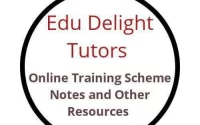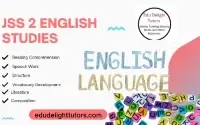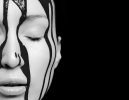Music JSS 1 Second Term Lesson Notes – Music Writing (Rules and Stem)
Music JSS 1 Second Term Lesson Notes – Week 3
Subject: Music
Class: JSS 1
Term: Second Term
Week: 3
Age: 10–12 years
Topic: Music Writing (Rules and Stem)
Sub-topic: Rules of Writing Musical Notes on the Staff
Duration: 40 Minutes
Behavioral Objectives
By the end of the lesson, students should be able to:
- Explain the basic rules of writing music on the staff.
- Identify the components of a musical note.
- Describe the functions of the note head, stem, and flag.
- Correctly place notes on a musical staff following the given rules.
- Differentiate between open and shaded note heads.
Keywords
- Note Head
- Stem
- Flag/Hook
- Music Staff
- Rules of Music Writing
Set Induction
The teacher will display a musical staff on the board and ask students to identify any symbols they recognize.
Entry Behavior
Students have learned about musical notes and their time values in previous lessons.
Learning Resources and Materials
- Staff notation chart
- Flashcards of different musical notes
- Manuscript paper for practical exercises
Building Background/Connection to Prior Knowledge
Students have already been introduced to different note types and their values. This lesson will focus on how to properly write these notes on the staff.
Embedded Core Skills
- Observation Skills
- Critical Thinking
- Creativity
Lesson Content
1. Introduction to Music Writing
- Music is written on a staff, which consists of five lines and four spaces.
- Notes are placed on these lines and spaces following specific rules to ensure clarity.
2. Components of a Musical Note
Each musical note has three main components:
A. The Note Head
- This is the oval-shaped part of the note.
- It can be open (hollow) or shaded (filled-in).
- Semibreve is the only note that uses an open note head without a stem.
B. The Stem
- The thin vertical line attached to the note head.
- It is used for notes shorter than a semibreve (minim, crotchet, quaver, etc.).
- Stem direction rules:
- Notes below the middle line of the staff have their stems pointing up.
- Notes on or above the middle line have their stems pointing down.
C. The Flag or Hook
- A small curved line attached to the stem of quavers and shorter notes.
- The more flags a note has, the shorter its duration.
3. Rules of Music Writing on the Staff
- Notes must be placed neatly on the correct lines or spaces.
- Stem direction follows the staff position:
- Notes below the third line: stems go up.
- Notes on or above the third line: stems go down.
- Minims, crotchets, and quavers have stems, while semibreves do not.
- Flags are always attached to the right side of the stem.
- Beamed notes (grouped quavers or semiquavers) must follow a slanting direction when written together.
Evaluation
Answer the following questions:
-
What is the oval-shaped part of a note called?
a) Flag
b) Stem
c) Note head
d) Staff -
Which note has no stem?
a) Crotchet
b) Minim
c) Semibreve
d) Quaver -
The thin vertical line attached to the note head is called the ____.
a) Flag
b) Hook
c) Stem
d) Beam -
Notes below the third line of the staff have their stems ____.
a) Pointing up
b) Pointing down
c) Without a stem
d) Curved -
A flag is found on which of these notes?
a) Semibreve
b) Quaver
c) Minim
d) Crotchet -
How many lines does a music staff have?
a) 4
b) 5
c) 6
d) 7 -
The minim has how many beats?
a) 1 beat
b) 2 beats
c) 4 beats
d) ½ beat -
Notes that are joined together with a beam are usually ____.
a) Semibreves
b) Minims
c) Crotchets
d) Quavers -
The flag is always attached to the ____ side of the stem.
a) Left
b) Right
c) Top
d) Bottom -
What is the function of a flag in music notation?
a) To extend the note’s duration
b) To shorten the note’s duration
c) To indicate a loud sound
d) To mark a rest
Class Activity Discussion (FAQs)
-
What are the three main components of a musical note?
- The note head, stem, and flag.
-
Why do some notes have open note heads while others are filled?
- Open note heads (e.g., semibreve, minim) represent longer durations, while filled note heads (e.g., crotchet, quaver) represent shorter durations.
-
Which note has no stem?
- The semibreve.
-
Why do notes below the third line have stems pointing up?
- To maintain uniformity and readability in written music.
-
What is the difference between a flag and a beam?
- A flag is a single curved line on one note, while a beam joins multiple notes together.
-
Which note type has one flag?
- A quaver.
-
How many beats does a crotchet last?
- 1 beat.
-
Why is music writing important?
- It helps musicians accurately read and play music.
-
What happens when you add more flags to a note?
- The note’s duration gets shorter.
-
Can a note have more than one flag?
- Yes, notes like semiquavers (two flags) and demisemiquavers (three flags).
Assessment (Evaluation Questions)
- Define the note head in music writing.
- What is the function of a stem in a musical note?
- Explain the rule for stem direction when writing notes.
- How do you recognize a quaver in music notation?
- Differentiate between a flag and a beam.
Conclusion
The teacher will review students’ answers, provide corrections, and give feedback on their performance.


